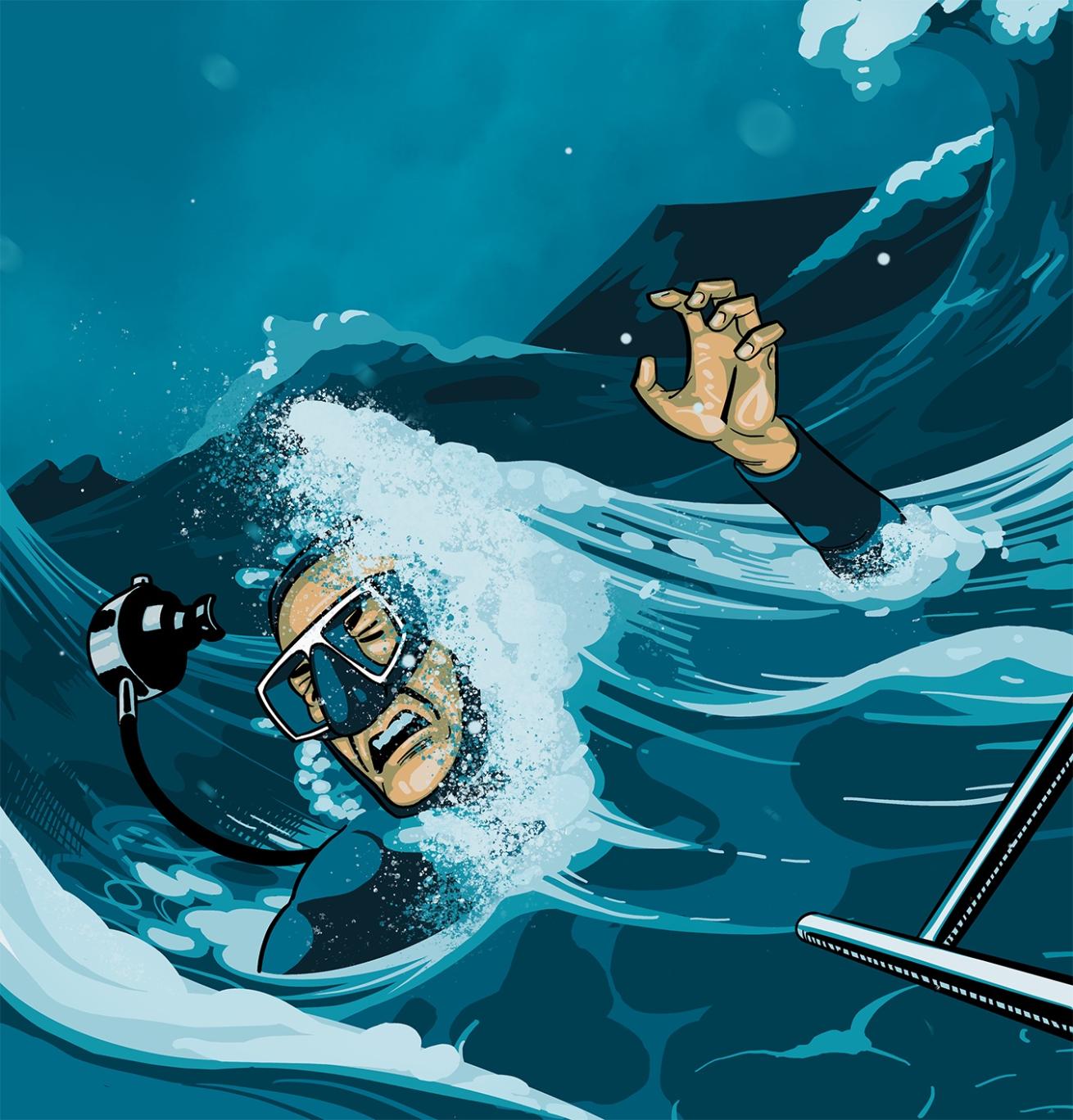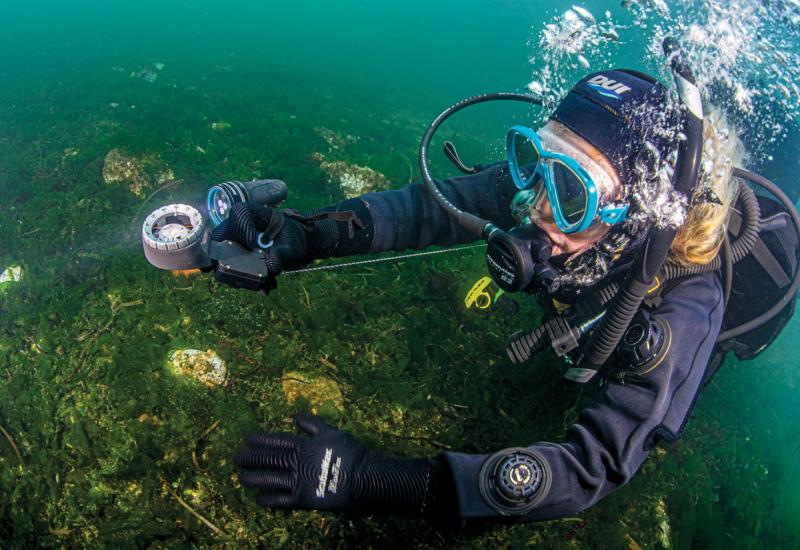Current Events | Lessons for Life

Illustration: Steven P. HughesA diver loses control in a strong current.
Randy was already on the boat and determined to make the dive. He and the group he would be diving with had planned to visit a shipwreck far from shore. It was more expensive than their usual charters, and the dive operation only offered it once in a while, so this was his only chance. The topside conditions were challenging, but he kept telling himself he would feel more comfortable once he got underwater.
The Diver
Randy had been diving for 10 years. He had both recreational and technical diving experience, but he hadn’t been as active recently. He also had diabetes. He was certified as a drysuit diver, but most of his recent diving was in a wetsuit.
For this dive, he was diving dry and wearing double 108-cubic-foot tanks for extended bottom and decompression times.
The Dive
Due to surface conditions, the first challenge on this dive was going to be entering the water. By the time the boat reached the dive site, waves were 5 to 6 feet, and the dive boat was rocking and rolling. There was also a 1-knot current at the surface.
The boat crew advised the divers to hit the water negatively buoyant and to get underwater as quickly as possible. The divers were also told to hold onto a line when making their giant strides so the boat crew could pull them over to the descent line. Randy was starting to feel sick but kept telling himself to get into the water.
The Accident
The moment Randy hit the water he knew he was in trouble. The divemaster pulled him to a hang bar where he could begin his dive, but that’s when Randy noticed his BC inflator had flipped behind his back. He kicked himself to the surface to get help.
At the surface, the waves caused the ladder to bounce up and down and the current pulled Randy backward. He found himself sliding along a current line. At the same time, his regulator hose got crossed with the line, pulling it halfway from his mouth and causing him to inhale a mist of seawater.
Eventually, Randy’s dive buddy and a divemaster noticed him struggling and dragged him back to the ladder. By the time they got him back to the boat he was nearly unconscious.
The boat crew got him on board and out of his dive gear and drysuit as quickly as possible. They treated him with 100 percent oxygen and headed to shore to meet up with a Coast Guard boat that had been alerted. At the dock, he was taken to the hospital by an ambulance. The emergency-department staff diagnosed Randy as a drowning incident. It was fortunate he survived.
Analysis
In Randy’s statement, he noted he was seasick, dehydrated, overheated and determined to make the dive to avoid wasting money. There are times when it just doesn’t make sense to make a recreational dive. If conditions are not good or you just don't feel up for it, call the dive, go get breakfast and wait for a better day. Diving is supposed to be fun, and the conditions that Randy experienced were anything but.
In the struggle to get back to the boat, Randy aspirated salt water into his lungs. Even small amounts of salt water in the lungs can draw blood and other fluids into the alveoli—the air sacs in the lungs—making it harder for the lungs to deliver oxygen to the bloodstream.
Randy was diving with gear that he had not practiced with recently. He entered the water with no air in his drysuit or in his BC. Drysuit divers often control their underwater buoyancy by adding or removing air from their suits. But Randy panicked in the water because his power inflator had flipped behind his back. He noted in his own description that he forgot about the power inflator on his drysuit.
While diving in these conditions is problematic, if he had remembered his drysuit inflator and made a safe descent underwater and along the descent line, he likely would have been able to recover his inflator hose while safely underwater.
Which brings up the final point, and one often discussed in this column: panic. Randy was in trouble before he even began the dive. It’s highly likely that he was on the verge of panic on the boat before he even got in the water.
The conditions, coupled with overheating in his drysuit on the surface and wearing heavy gear he hadn’t used in a while, set him up for problems. Once he got in the water and couldn’t locate his power inflator, he forgot everything else and struggled to get back to the boat for assistance.
Also, Randy was diabetic, and while it is unknown whether his medical condition affected this situation, it is an additional consideration. Many people with diabetes can dive safely, but they must consult a dive physician prior to getting in the water and closely follow the Undersea and Hyperbaric Medical Society and DAN Guidelines for Diabetes and Recreational Diving.
Lessons For Life
- Be familiar with your equipment. If it’s been a while since you dived in a certain gear configuration, take some time in a pool or controlled dive situation to recall how everything works.
- Make good dive decisions. If conditions are sketchy, or you are feeling sick, consider calling the dive and trying again later.
- Be aware of your mental state. If you are feeling anxious about a dive, there is a good chance a small problem can build into a bigger one.










